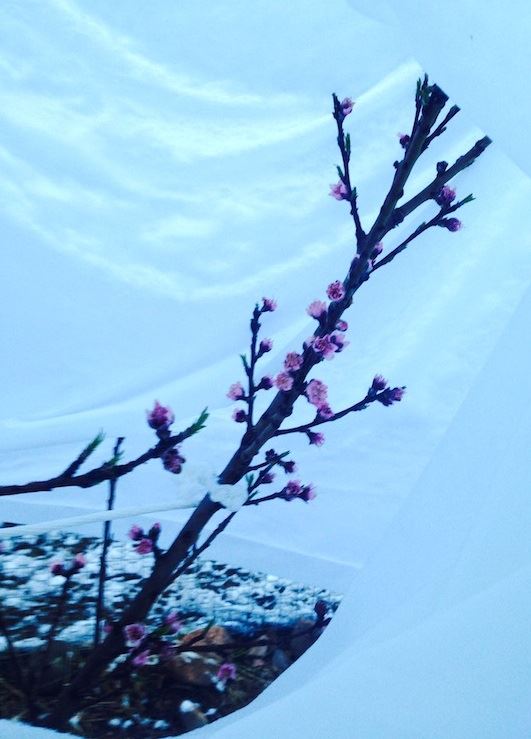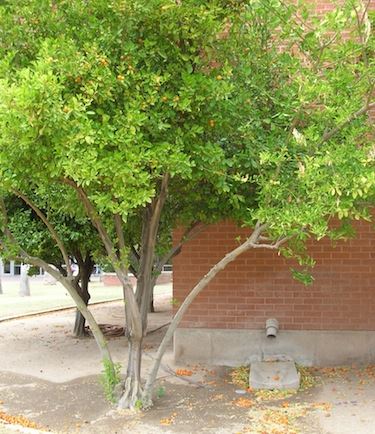Preparing for Extreme Conditions Click Here for a PDF of Preparing for Extreme ConditionsArizona has a range of climate conditions across the state, and any region can experience extreme heat, drought, cold or storm events. By choosing the right types and varieties of trees, you can help avoid tree damage from extreme temperatures, storms or droughts. However, since all trees can be affected by an increasingly unpredictable and erratic climate, be prepared to protect trees from extremes now and in the future. Extreme cold and frost events Keep track of local weather and temperature forecasts during the bloom time of sensitive fruit trees. Frost danger can be higher in early spring, so plant cold-sensitive trees in warm microclimates away from cold air pockets. Choose late blooming or cold-hardy tree varieties to help avoid frost damage, though hard late-spring frosts can damage even these. If freezing is forecasted, move frost- and cold-sensitive dwarf trees that are in containers to locations near south walls or under roofs. Wrap young or frost-sensitive trees in sheets, blankets, cardboard or fiberglass—though these could blow off in a nighttime storm. A more permanent option is to build structures or cages over small trees and drape them with tarps, blankets or shade cloth to protect them from frost (as well as sun) when needed. If possible, place lamps or heaters within tree canopies or under trees to emit warmth overnight. Moisten soil before predicted cold nights, since damp soil retains heat better than dry soil. Extreme heat events and drought Most fruit and nut trees prefer full sun, but the intense sunlight in southern Arizona can burn exposed bark, leaves and fruits. To prepare for intense desert sun and heat, plant hardier natives on the west sides of less hardy trees to shade them in the afternoon. Plant heat-sensitive trees in the summer shade cast on the east and southeast sides of buildings. When pruning trees, leave some branches that shade the trunk. If the trunk is exposed, plant shrubs around the base of the tree to shade the trunk. Hang shade cloth over sensitive trees in direct sun. During extended droughts, even native trees may need more water. Projected climate changes could result in higher average temperatures, higher evaporation rates and prolonged droughts. Check soil moisture and tree conditions to make sure the trees are receiving enough water, especially during the hot dry months of May and June. Mulch more heavily to conserve soil moisture, keeping in mind that wood mulch absorbs water. Water at tree drip lines and check soil moisture by pushing a soil moisture sensor, metal rod or stick into the soil to see how deeply it easily penetrates, or dig 4 to 6 inches down to check soil moisture. Intense storms Sudden storms in spring and summer can cause branches to break and flowers and fruit to fall. Heavy winter snows and ice storms can also cause structural damage to the trees. While these cannot be avoided, the damage can be lessened by keeping the trees pruned and the orchard clean of debris that could blow in a storm. |
A sheet protects a blooming pear tree from a late season snowfall. The orchard is also surrounded by a deer fence and covered with bird netting to protect fruit.
Citrus tree planted on the southeast corner of a building where it is shaded from summer afternoon sun. |
CAUTION: Never eat anything that is not properly identified. It is your responsibility to ensure that all fruits, nuts, seeds, pods and other edible products of trees and shrubs are correctly identified and safe to eat before eating them or serving them to others.
Copyright 2023
LEAF is under the fiduciary stewardship of the Arizona Community Tree Council, a 501(c)3 non-profit organization.
70 S Val Vista Drive, Suite A3-186, Gilbert, AZ 85296






